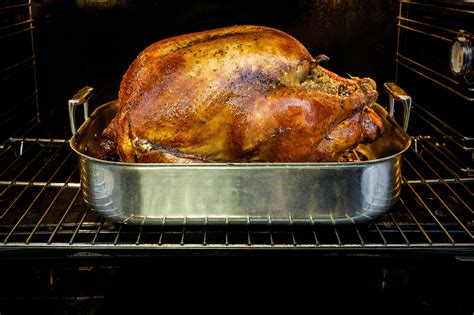How To Oven Roast A Turkey: A Step-by-Step Guide for a Perfect Thanksgiving (or Any Day!) Feast
Thanksgiving, Christmas, or any special occasion – a perfectly roasted turkey is the centerpiece of many celebratory meals. But achieving that golden-brown, juicy masterpiece can seem daunting. Fear not! This comprehensive guide will walk you through every step, ensuring your turkey is the star of the show.
Preparing Your Turkey for Roasting
Before you even think about preheating the oven, proper preparation is key to a succulent turkey.
1. Thawing Your Turkey Safely
Thawing a frozen turkey requires careful planning. Never thaw a turkey at room temperature. The safest methods are:
- Refrigerator Thawing: The recommended method. Allow approximately 24 hours for every 4-5 pounds of turkey. Place the turkey on a tray to catch any drips.
- Cold Water Thawing: Submerge the turkey in its original packaging in cold water, changing the water every 30 minutes. This method is faster than refrigerator thawing but requires more attention. Calculate thawing time based on the weight; a 12-pound turkey might take 6-8 hours.
Important: Always ensure your turkey is completely thawed before roasting. Partially frozen turkeys will cook unevenly.
2. Brining (Optional but Recommended)
Brining adds incredible moisture and flavor to your turkey. A simple brine involves dissolving salt and sugar in water, then submerging the turkey for 12-24 hours in the refrigerator. You can also add herbs and spices to customize the flavor profile. Many online resources offer detailed brine recipes to suit your preferences.
3. Prepping the Turkey for the Oven
- Pat it Dry: Remove the turkey from the brine (if using) and thoroughly pat it dry with paper towels. This helps achieve crispy skin.
- Season Generously: Don't be shy with the seasoning! Rub the turkey generously inside and out with salt, pepper, and your favorite herbs and spices (sage, rosemary, thyme are classic choices).
- Trussing (Optional): Trussing the turkey (tying the legs and wings together) helps it cook more evenly and improves presentation. You can find many tutorials online demonstrating this technique.
- Stuffing (Optional and Controversial): While stuffing your turkey adds flavor, it can also increase cooking time and pose food safety risks if not cooked thoroughly. Many cooks prefer to cook stuffing separately.
Roasting Your Turkey to Perfection
1. Oven Temperature and Roasting Time
Preheat your oven to 325°F (163°C). Roasting time depends on the turkey's weight. A general guideline is approximately 13 minutes per pound. However, always use a meat thermometer to ensure the turkey is cooked through.
2. Placing the Turkey in the Oven
Place the turkey breast-side up on a roasting rack set inside a roasting pan. This allows for even cooking and crisp skin.
3. Basting and Monitoring
Basting the turkey with pan drippings every 30-45 minutes helps keep it moist and adds flavor. Use a meat thermometer inserted into the thickest part of the thigh (avoiding the bone) to check the internal temperature. The turkey is done when the thermometer registers 165°F (74°C).
4. Resting is Crucial
Once cooked, remove the turkey from the oven and let it rest for at least 30 minutes before carving. This allows the juices to redistribute, resulting in a more tender and flavorful bird.
Carving and Serving Your Roasted Turkey
After resting, carve your turkey and serve it with your favorite sides. Enjoy the fruits of your labor!
Tips for an Extra-Delicious Roast Turkey:
- Use a meat thermometer: This is the only reliable way to ensure your turkey is cooked through.
- Don't overcrowd the pan: Ensure adequate space around the turkey for even heat circulation.
- Let the turkey rest: This is crucial for juiciness.
- Experiment with flavors: Don't be afraid to try different herbs, spices, and brines.
By following these steps, you’ll be well on your way to roasting a truly memorable turkey. Happy cooking!
